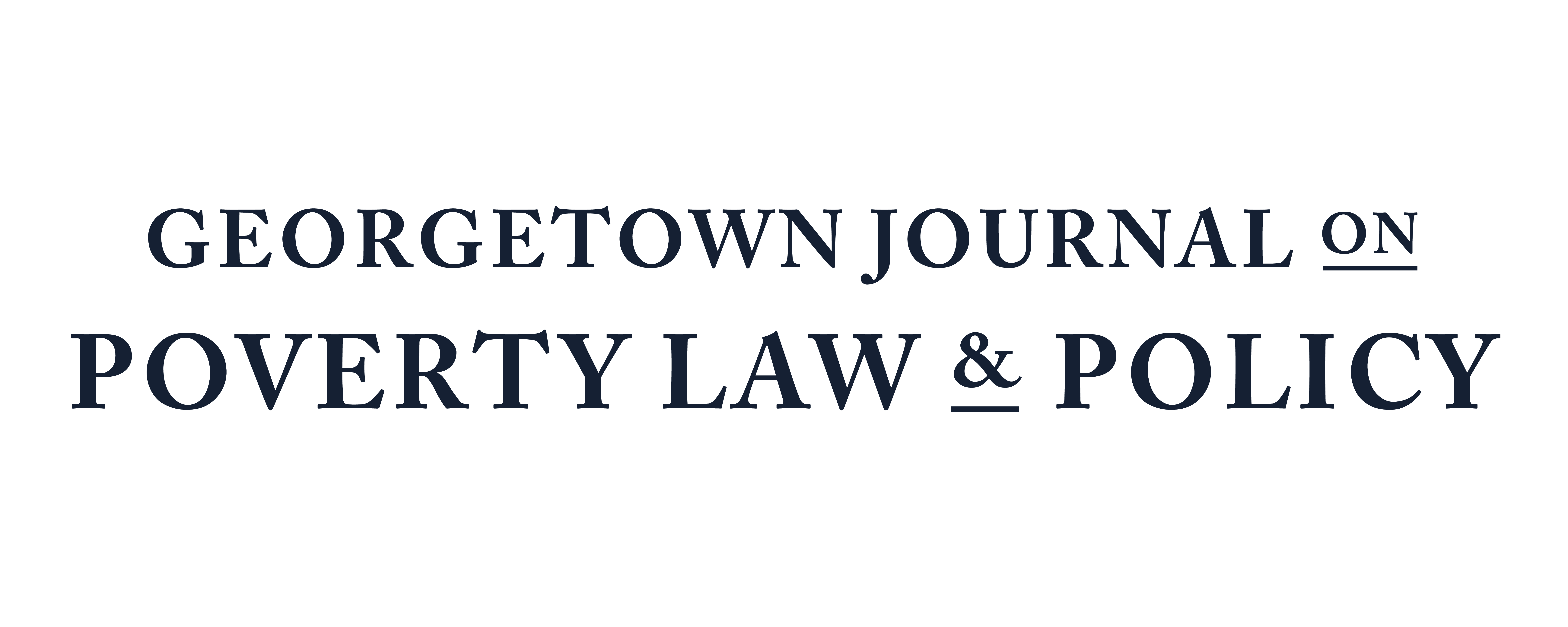Advocacy and the Child Tax Credit: A Conversation with Kathryn Menefee of the National Women’s Law Center
June 2, 2025 by Emily de Moura
I recently spoke with Kathryn Menefee, an attorney at the National Women’s Law Center (“NWLC”) and a graduate of Georgetown University Law Center. NWLC plays a pivotal role in promoting gender equality. The NWLC was established in 1972 as a project of the Center for Law and Social Policy “to secure and advance legal rights and protections for women in the courts, in Congress and in the states.”[1] With NWLC experts working across a wide range of substantive areas, Kathryn emphasized that “women’s lives can’t be siloed, and there are so many intersections,” highlighting the importance of collaboration within the organization when issues cut across multiple areas of law (as they so often do).
During our conversation, we focused on Kathryn’s recent work surrounding the Child Tax Credit (“CTC”), and how her role has evolved since she joined NWLC in 2020. Refundable tax credits, like the CTC, have garnered significant attention over the past half decade, as Congress has debated their proper scope and reach. Before diving into our discussion about Kathryn’s work, I will provide a brief recent history of the CTC.
In 2017, Congress passed the Tax Cuts and Jobs Act (“TCJA”) which increased the value of the CTC from $1,000 to $2,000 per child, but also altered who could claim the credit.[2] For example, the TCJA “more than tripled the income level at which the credit begins to phase out,” making it available to more higher-income families.[3] Simultaneously, the TCJA introduced a refundability cap so that the lowest-income families were no longer able to receive the benefit of the full credit.[4] This uneven expansion under the TCJA, however, was temporarily supplanted by the significant changes that were adopted under the American Rescue Plan Act (“ARPA”) for tax year 2021. Under the 2021 expansion to the CTC, Congress removed the earned income requirement, increased the credit amount, and made the CTC fully refundable.[5] Organizations like the NWLC collected significant data during this period, demonstrating that the expanded CTC “drastically reduced poverty rates, especially for women of color and families headed by women.”[6] Despite its undeniable success, this expansion was not extended beyond tax year 2021.[7]
Currently, the CTC is worth up to $2,000 per eligible child.[8] Of this amount, $1,700 is refundable, while the remainder is available only to offset tax liabilities.[9] However, families must earn at least $2,500 annually to qualify for the credit, meaning the lowest-income families are excluded.[10] During my conversation with Kathryn, we discussed her day-to-day work and what excited her about the future of her advocacy surrounding the CTC.
Kathryn joined NWLC in 2020 and was working on the CTC when Congress passed ARPA. “It was a really exciting time to start my work with the CTC,” she recalled. “A lot of my work involved tracking the impact of the expansion and seeing how much it helped families.” The expanded CTC had a profound effect, cutting child poverty nearly in half and helping millions of families make ends meet. Kathryn explained that, after seeing the dramatic impact of the expansion, she “did a lot of advocacy work in late 2021 to try to get it extended.” Unfortunately, the expanded CTC ended, and efforts to restore it have been unsuccessful. As a result, Kathryn and her team have shifted their focus to tracking the costs of losing “this really important expansion.”
With the TCJA set to expire at the end of this year, Kathryn shared that “no day looks the same, especially right now.” Much of her recent work involves direct engagement with lawmakers, as she and her team monitor and seek to shape pending legislation. Kathryn also highlighted the importance of building coalitions between NWLC and various state and national groups to safeguard the progress made on the CTC. In connection, she expressed concern over recent cuts at the Internal Revenue Service (“IRS”). “The IRS has had a lot of funding cuts, . . . so we also work to make sure there’s enough funding for the IRS because families can’t get their benefits if there isn’t funding,” she said.
Despite the uncertainty surrounding the future of the CTC and the IRS’s budget, Kathryn remains optimistic. “What’s really exciting about the CTC is that we saw that it worked,” she explained. “We have both qualitative and quantitative data showing how much this helped families, so this really shifted the needle on what we can ask for and what people will agree is useful.” Kathryn believes the 2021 expansion helped reshape the narrative around the CTC, emphasizing that “there’s often a lot of talk about . . . who ‘deserves’ support,” but that “the 2021 expansion helped in showing that all families are deserving of support and are deserving of being able to use income support to help their families in the way that they see fit.”
In closing, Kathryn noted that the 2021 expansion was pivotal in shifting the narrative and building a solid foundation for future advocacy. Although progress is more difficult in the current legislative moment, “there’s a strong foundation to build on in a later legislative moment.”
[1] Our History, Nat’l Women’s L. Ctr., https://nwlc.org/about/history/ (last visited Mar. 16, 2025).
[2] Brendan McDermott, Cong. Rsch. Serv., R41873, The Child Tax Credit: How It Works and Who Receives It (Updated Jan. 31, 2025).
[3] Id.
[4] Id.
[5] Id.
[6] Kathryn Menefee & Amy Matsui, “Welfaring” the Child Tax Credit: How Racial and Gender Stereotypes Have Blocked Expansions to the CTC and Undermined Its Ability to Reduce Poverty, 22 Pitt. Tax Rev. 43, 47 (2024).
[7] Id. at 45.
[8] McDermott, supra note 2.
[9] Menefee & Matsui, supra note 6, at 46.
[10] Id. at 45–46.

